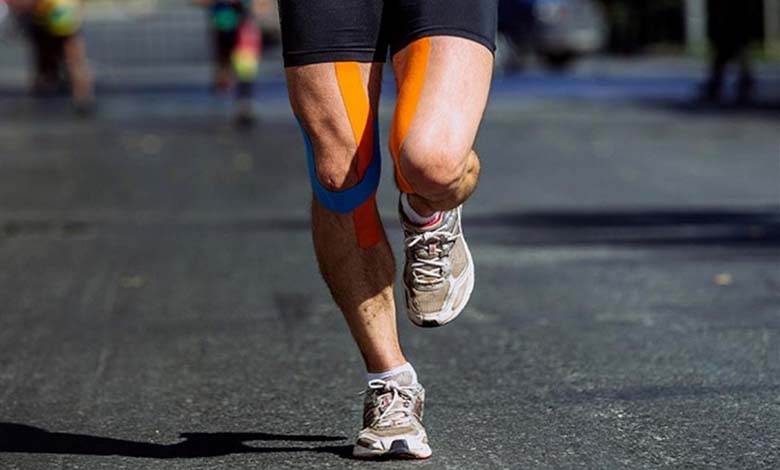Kinesiology tape: does it truly enhance athletic performance or is it just a psychological illusion?

Since its appearance on sports fields in the early 2000s, kinesiology tape has become ubiquitous in the sporting world. Professional and amateur athletes use it to prevent injuries, support muscles and joints, and even attempt to enhance performance. But behind this popularity lies a central question: is kinesiology tape genuinely effective, or is it primarily a placebo effect?
Origins and principles of kinesiology tape
Kinesiology tape was developed by Dr. Kenzo Kase in Japan during the 1970s. Its design is based on several theoretical principles:
- Muscle support: the tape is intended to support muscles without restricting movement.
- Improved blood and lymph circulation: by slightly lifting the skin, the tape is supposed to promote drainage and reduce inflammation.
- Proprioceptive stimulation: contact with the skin is believed to enhance body awareness and muscle activation.
These physiological mechanisms are theoretical and rely on the idea that the body responds positively to mild skin tension and continuous tactile stimulation.
Applications in sports
Kinesiology tape is used across numerous disciplines: football, basketball, tennis, running, swimming, and even combat sports. Its main objectives are:
- Reducing muscle and joint pain.
- Preventing common injuries such as sprains, tendinitis, or strains.
- Enhancing performance and muscular endurance.
- Accelerating recovery after intense effort.
Many top athletes wear these colorful bands on their legs, arms, and back, reinforcing the perception of their effectiveness.
Scientific evidence: mixed results and controversy
Despite its popularity, scientific studies show mixed results. Several studies have investigated the tape’s impact on pain, muscle strength, and performance:
- Pain and recovery
Some studies suggest that kinesiology tape may slightly reduce perceived pain after exercise or minor injury. However, this reduction is modest and often comparable to placebo effects. - Performance and strength
Most research indicates that the tape does not significantly improve strength, speed, or endurance. Gains observed in some cases seem largely due to psychological effects: the athlete believes the muscle is better supported, which influences performance. - Proprioception and balance
Results are inconsistent. Some studies report slight improvements in proprioception, while others observe no measurable changes.
In short, scientific evidence does not support a clear claim that kinesiology tape objectively enhances athletic performance. Placebo effects, psychological comfort, and sensory stimulation play significant roles in user experience.
The placebo effect: a plausible explanation
The placebo effect is well documented in sports science and medicine. When an athlete believes that a tool or technique will improve performance, the body often responds positively even if the underlying physiological mechanism is limited.
Kinesiology tape may work in part through this phenomenon:
- Increased confidence: the athlete feels protected and supported.
- Psychomotor activation: enhanced body awareness may slightly improve coordination and posture.
- Motivation and mental preparation: using the tape reinforces routines and readiness, crucial for performance. Even if direct physiological benefits are limited, the tape may indirectly contribute to performance by boosting confidence and focus.
Limitations and precautions
It is important to note that kinesiology tape does not replace:
- Proper and progressive training.
- Muscular or physiotherapeutic rehabilitation after injury.
- Comprehensive prevention based on technique, warm-up, and rest.
Moreover, improper tape placement may cause discomfort, skin irritation, or excessive tension, potentially impairing performance. Professional guidance is recommended.
Conclusion: a complementary tool, not a miracle
Kinesiology tape is not a magic solution for improving performance or significantly preventing injuries. Its physiological effectiveness is limited, and observed benefits often stem from placebo effects and enhanced body perception.
However, it can be a useful tool to:
- Temporarily alleviate certain types of pain.
- Boost athlete confidence and motivation.
- Serve as a complement to training or rehabilitation programs.
Ultimately, athletic performance depends far more on rigorous training, technique, nutrition, sleep, and recovery than on applying a colorful strip of tape to the skin.












